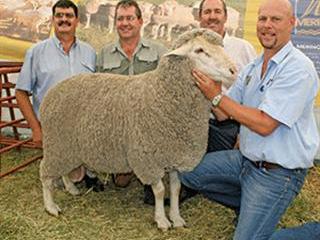What is the impact of predators on South African livestock?
That is the proverbial million dollar question, but nobody has hard facts. The Canis-Caracal Programme of the African Large Predator Research Unit (ALPRU) is currently collecting information from sources across the country. The large African predators are good indicators of the wellbeing of the natural environment, with specific reference to the habitat and the prey species. We therefore focus on all aspects of the prey animal base and its habitat as well.
What predators are we talking about?
The two most common predators of livestock are the black-backed jackal and the caracal. However, vagrant dogs, leopards, brown hyenas and cheetahs are also kill livestock, but these cases are more sporadic and localised. Smaller predator species also cause occasional problems.
You have repeatedly warned that indiscriminate killing of predators such as jackal and caracal is counter productive. Why?
The social structure of the predator is destabilised by large scale killing instead of killing only offending individuals, especially in the case of the black-backed jackal. In short, the young immature individuals aren’t trained sufficiently by the adults to prey on natural prey, before the adults are removed, and the young females start breeding earlier and produce larger litters. The loss of territorial adults creates a vacuum which resulting in an influx of young individuals that must create their own space and establish new hunting grounds. It’s suspected that this phase creates ideal opportunities for new habits such as predation on livestock to take root and flourish. Feedback from farmers suggest that predation may subside temporarily after a hunting spree, then flare up again and often cause more damage than before.
Whose responsibility is it to lessen and manage the impact of predators?
Managing black-backed jackal and caracal will only succeed if efforts are coordinated over a very large area. We suggest it be handled as a national action and priority. The two key roleplayers must assume specific responsibilities. Government has a primary (but not exclusive) responsibility for policy, research, training, coordination and monitoring. Please note that this is not a plea for a return to the old dispensation where government dominated the scene.
On the other hand, the primary (but again not exclusive) responsibility of livestock farmers is to safeguard their animals and control predators. Consumers of livestock products are also very important. To achieve these goals, the goodwill and active participation of the large retailer groups must be created. The Canis-Caracal Programme is engaged in such initiatives because of the important role large retailer groups play as links with consumers of fibre and meat. The involvement of producer organisations as representatives of the red meat, wool and mohair producers has been established.
As I understand it, a comprehensive predator management plan was put on the table as early as 1993.
The so-called Problem Animal Control Forum was held on 4 and 5 May 1993 at Golden Gate. It was a culmination of a process which brought together the National Woolgrowers’ Association, the Red Meat Producers’ Organisation, Nature Conservation authorities, and the administrations of the four provinces at the time, as well as representatives from control organisations and the Regional Services Council organisations. Before this, a National Policy and Strategy for Problem Animal Control in South Africa had been formulated by the National Problem Animal Policy Committee (NPAPC), under its chairperson Peter Kingwill.
This committee was commended for taking the lead in formulating the Policy, which was finalised on 18 November 1992. In his opening address to the forum, Kingwill listed four key areas NPAPC had identified requiring strategies, namely communication, control, training and research and development. With the demise of Oranjejag imminent, it was also stressed that financing control organisations remains a significant stumbling block. Today, financing any concerted and coordinated effort is still a major challenge.
However, at least two provincial delegates at the forum indicated their official acceptance of and compliance with the content of the National Policy and Strategy for Problem Animal Control in South Africa. What does the plan entail and who is responsible for implementing it? It was envisaged that the broad Policy Document would be implemented at the provincial level. Sadly, this never happened because the new geopolitical dispensation after 1994 created nine new provinces with new priorities. Currently it’s implemented almost piecemeal by functionaries in the different provincial departments of environmental affairs and conservation. That’s why we call for a coordinated action and a firm partnership between farmers and government, both at national and provincial level.
Establishing a coordinated predator management approach in South Africa will contribute vastly to the broad mandate of the Department of Environmental Affairs and Tourism (DEAT) of being the custodian of biodiversity and conservation. However, in South Africa today, it may require an NGO to take the lead and get the ball rolling. That is precisely what we have suggested to officials of DEAT. This will be followed up with envisaged talks at a higher level.
How and by whom should predator management be funded? The burden of financing this venture may be carried jointly by farmers and government. In the interest of executing its broad mandate, and as the DEAT is the custodian of biodiversity and conservation, government may be expected to carry the larger share. But any incentives should be based on achieving a sustained decline in the impact of predation on the livestock industry, not the number of predators killed. E-mail ALPRU at [email protected]. |fw









